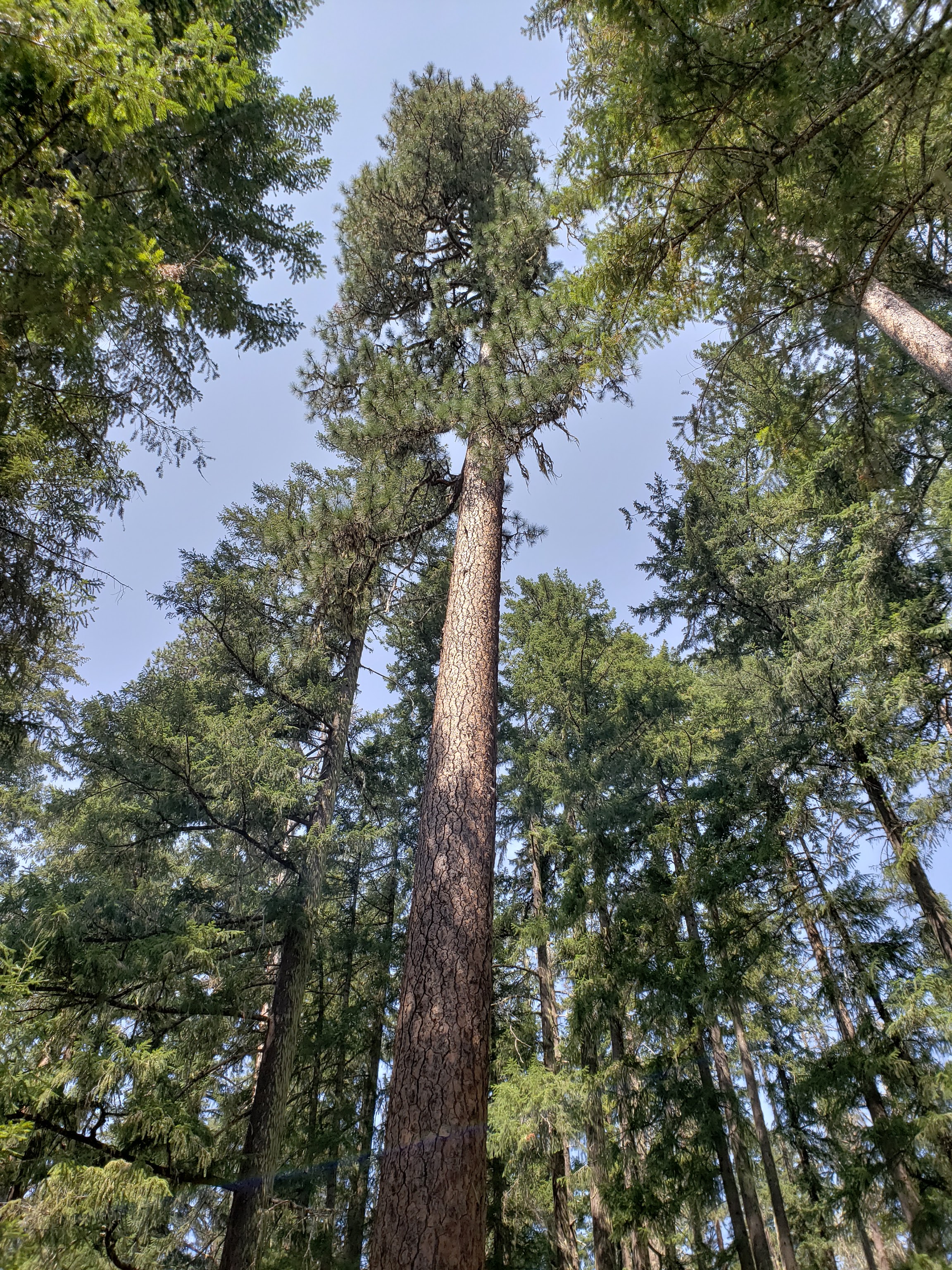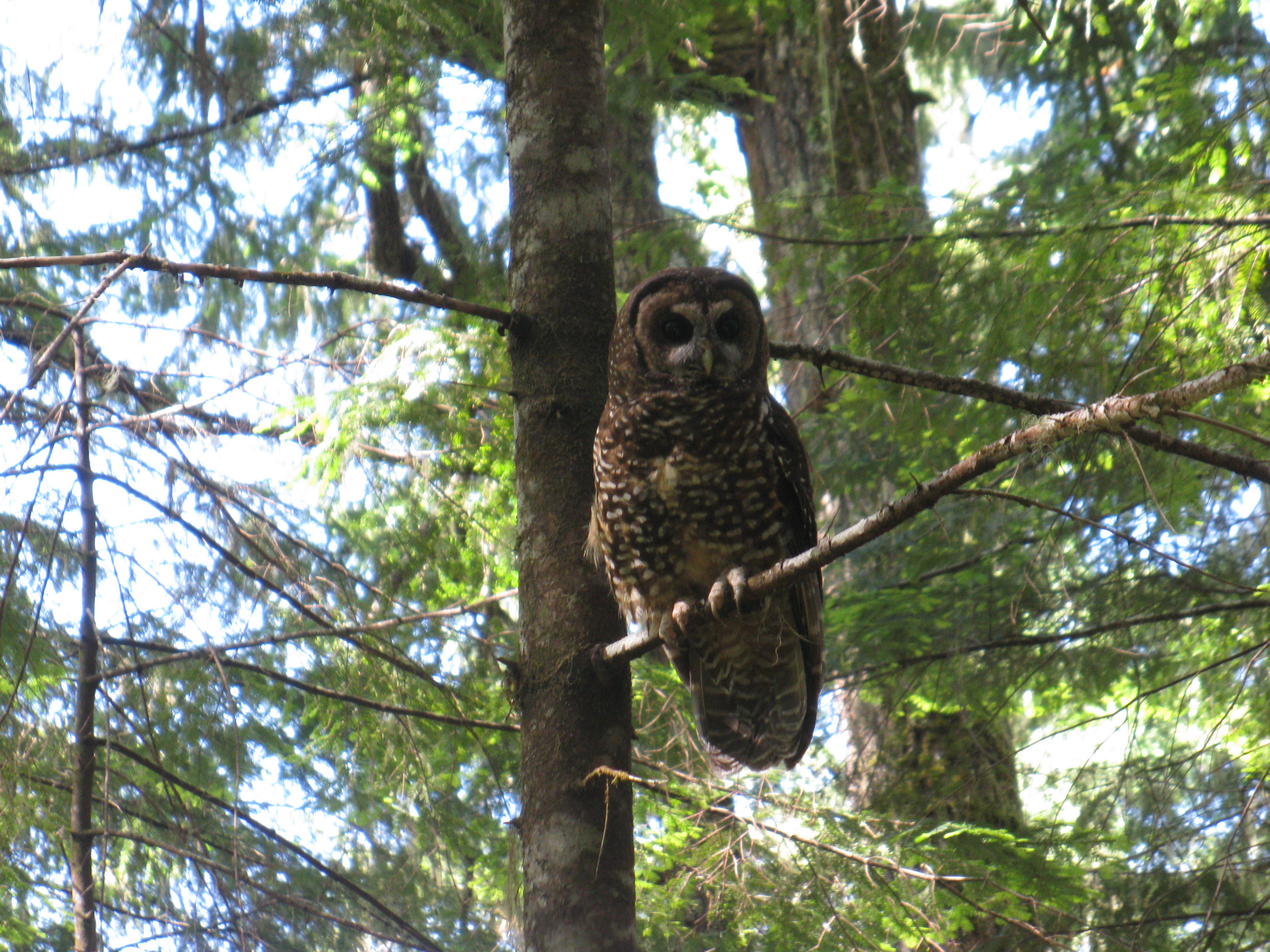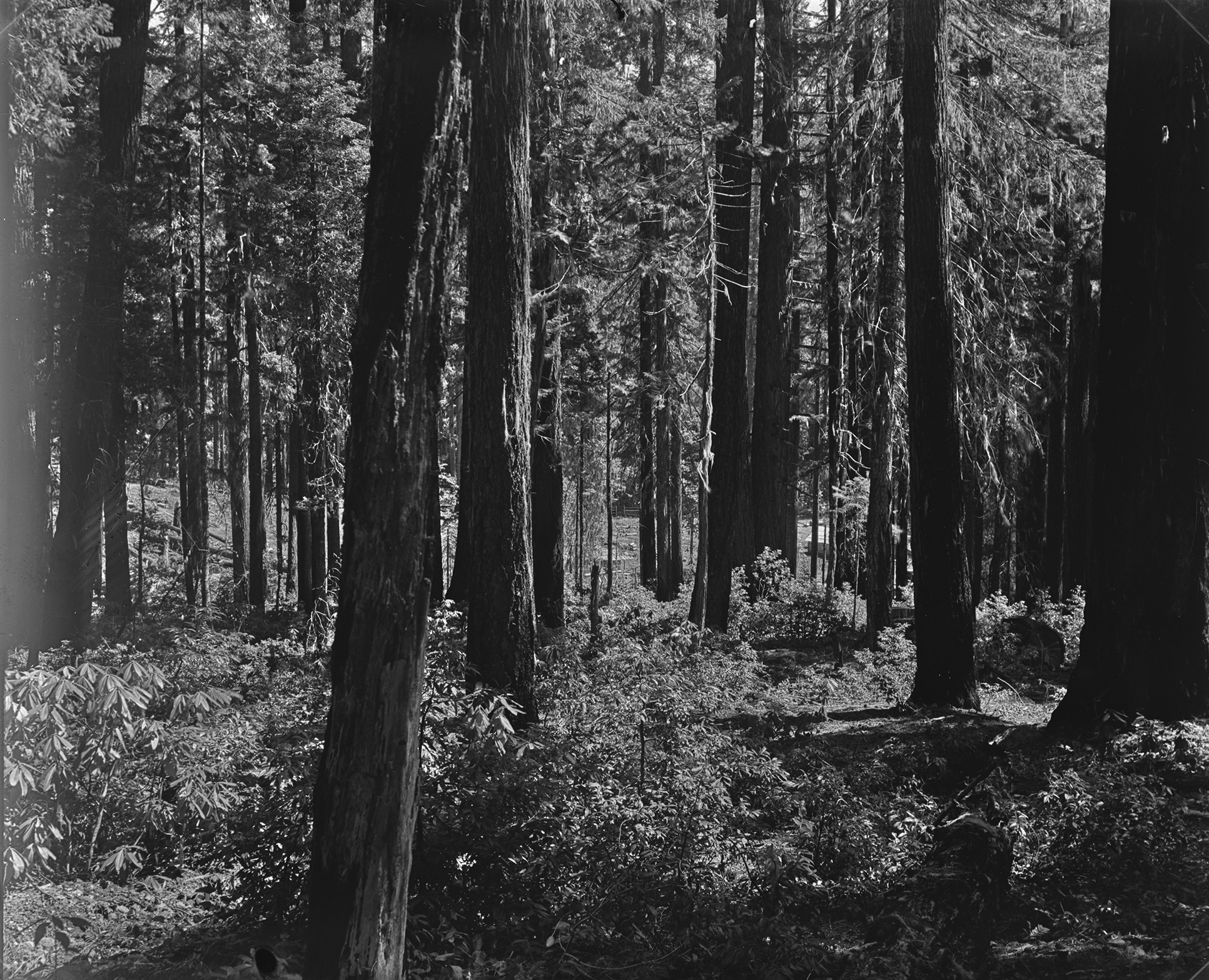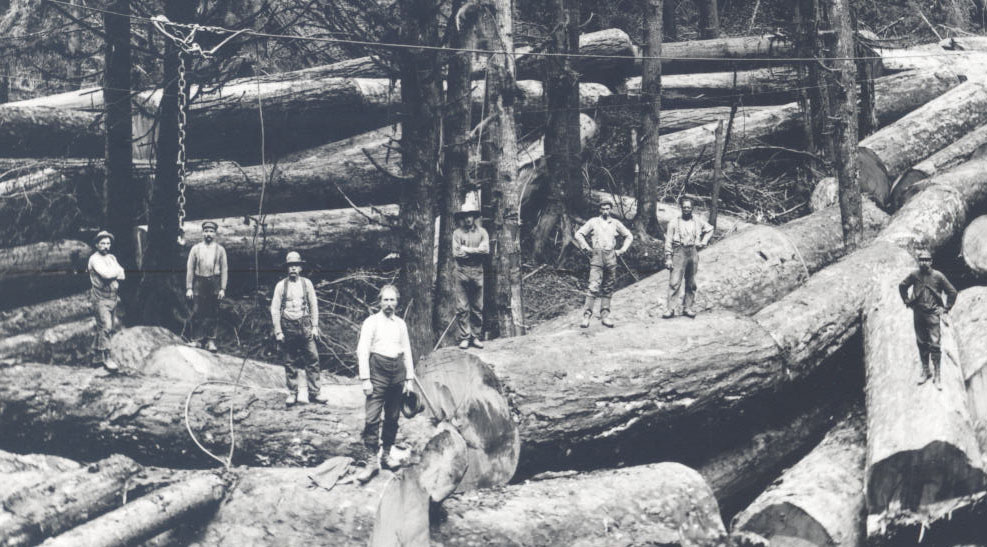In December 1983, the Oregon Natural Resources Council (now called Oregon Wild) sued the U.S. Forest Service over its allocation of roadless areas in Oregon to uses that would destroy their wilderness character. The Forest Service reacted to the filing of the lawsuit, Oregon Natural Resources Council v. John R. Block, by calling a halt to timber sales on more than two million acres of Oregon national forestland. That reaction made a compelling case for enacting laws preserving more wilderness in Oregon and elsewhere in exchange for insulating the agency from judicial review. Consequently, Oregon U.S. Senator Mark O. Hatfield threw his political weight behind a legislative compromise for Oregon that served as a catalyst for new wilderness laws for twenty-four states, including Oregon. The laws preserved 7.383 million acres of wild national forestland, nearly half of which had been slated for logging, roadbuilding, and other development. Congress’s decision to keep these wild forests wild has been validated by their value as a reservoir of biodiversity and a means of mitigating climate change.
The Oregon Natural Resources Council (called the Oregon Wilderness Coalition until 1982) was founded in 1974 to build grassroots support for the protection of roadless areas in Oregon’s national forests. It was intent on gaining passage of an Oregon wilderness law that preserved areas with ecological value. In early 1983, an Oregon wilderness bill passed the U.S. House of Representatives, but the bill stalled in the U.S. Senate. In December, ONRC responded to the delay by suing the U.S. Forest Service in the U.S. District Court for the District of Oregon.
In Oregon Natural Resources Council v. John R. Block (Block was President Ronald Reagan’s Secretary of the U.S. Department of Agriculture, which oversees the Forest Service), ONRC charged that the Forest Service had violated the National Environmental Policy Act (NEPA) when it recommended that Congress designate a small percentage of nearly 3 million eligible acres of Oregon national forests as wilderness. The Forest Service had based its recommendation on a 1979 study of 62 million acres of wild areas in national forests in thirty-eight states and Puerto Rico. The purpose of the study was “to select appropriate roadless areas to help round out the National Forest System’s share of a quality National Wilderness Preservation System.”
The Forest Service called the study the Roadless Area Review and Evaluation, known as RARE II (RARE I, prepared in 1972, had been successfully challenged by the Sierra Club in federal district court). The study had been prompted by timber industry representatives who wanted to dispel the uncertainty surrounding their access to national forest timber so they could make informed investment decisions. They met with Rupert Cutler, a former assistant executive director of the Wilderness Society, who would soon be the Assistant Secretary of Agriculture for Conservation, Research, and Education. At the meeting, Cutler “made a commitment to accelerate the examination of roadless areas as a prelude to land management planning for all of the National Forests.” Once Cutler became Assistant Secretary, he commissioned the RARE II study and directed the Forest Service “to resolve the ‘uncertainty’” that troubled the timber industry by inventorying roadless areas and “recommending some areas for wilderness designation and ‘releasing’ others” for nonwilderness uses, including timber harvesting.
Upon issuing the RARE II Final Environmental Statement in January 1979, the Forest Service recommended allocating Oregon’s 2,976,465 roadless acres as follows: 368,120 acres (12.4 percent) in 25 areas as wilderness; 399,901 acres (13.4 percent) in 20 areas for further study; and 2,208,444 acres (74.2 percent) in 161 areas as nonwilderness, where logging, roadbuilding, and other development were permitted. Typically, the Forest Service recommended a small fraction of roadless acres for wilderness designation—10.7 percent of 2,520,068 acres in Washington, for example, and 14.9 percent of 6,022,559 acres in California.
On July 25, 1979, wilderness advocates joined the State of California in suing the Forest Service in California v. Bob Bergland (Bergland was President Jimmy Carter’s Secretary of the Department of Agriculture). They asserted that the agency’s environmental impact statement (EIS) on the ramifications of allocating forty-seven roadless areas in California to nonwilderness uses violated NEPA. Both the U.S. District Court for the Eastern District of California (in California v. Bergland on January 8, 1980) and the U.S. Court of Appeals for the Ninth Circuit (in the same case, renamed California v. Block, on October 22, 1982) agreed that the EIS failed to adequately describe the wilderness qualities of the roadless areas and the impacts development would have on them.
California v. Bergland undermined the Forest Service’s recommendations for national forests in the rest of the states, since the EIS was nationwide in scope and its flaws applied across the board. In 1980, to short-circuit copycat lawsuits, some members of Congress attempted to broker a compromise among the Forest Service, the timber industry, and wilderness advocates on the fate of roadless areas allocated to nonwilderness. In return for deeming the RARE II EIS legally sufficient for purposes of NEPA, they proposed that the areas allocated to nonwilderness in each national forest—that is, the areas released for development—be re-evaluated for wilderness designation when the next forest management plan was prepared. This approach became known as “soft release.” “Hard release” would make the allocation of roadless areas to development permanent, without any possibility of considering them for wilderness designation in the future.
The soft-release compromise made its way into only six wilderness bills, those for Alaska, Colorado, Indiana, New Mexico, Missouri, and West Virginia. Although fearful of successful legal challenges to the RARE II EIS and court-ordered statewide injunctions on logging, the timber industry mostly held out for hard release, especially for states that produced the most timber—that is, California, Oregon, and Washington. In 1981, with Ronald Reagan’s arrival in the Oval Office and the U.S. Senate’s flip from Democratic to Republican control, the timber industry decided it could get the hard-release formula it wanted from less environmentally oriented politicians. Wilderness advocates remained insistent on soft release. In most states, however, neither side had the votes to prevail. Congress was at a stalemate.
On February 1, 1983, Oregon Congressman Jim Weaver, with the support of Representatives Les AuCoin and Ron Wyden, spearheaded legislation that would have designated more than a million roadless acres in Oregon as wilderness, providing for a form of soft release and the legal sufficiency of the RARE II EIS. Oregon U.S. Senator Mark O. Hatfield, a proponent of hard release, held hearings on Weaver’s bill, but he did not introduce a bill of his own. As the year and the first session of the 98th Congress came to an end, Weaver’s bill was dead until the second session began in January 1984.
Meanwhile, on March 9, 1983, Forest Service Chief R. Max Peterson had acknowledged that California v. Block would be controlling precedent in Ninth Circuit states, including Oregon, and would be highly persuasive in the rest of the country. “Thus,” he wrote, “the government is likely to lose any future court challenges to decisions regarding roadless areas for which reliance is placed on the RARE II EIS for NEPA compliance.” Rather than concede the deficiency of the EIS, however, the Reagan administration decided to rely on it, unless wilderness advocates forced the Forest Service to comply with the law through litigation. The Sierra Club and the Wilderness Society argued against such lawsuits, fearful they would prompt a landslide of legislation hostile to preserving wilderness.
For ONRC, the distinction between the types of release that separated the timber industry and national environmental groups was academic. With roadless areas allocated to nonwilderness disappearing because of roadbuilding and logging, the Council decided it had to act. On December 13, 1983, ONRC filed Oregon Natural Resources Council v. Block, challenging the allocation of 2.24 million acres of roadless areas to nonwilderness in eleven of the twelve national forests in Oregon. The lawsuit sought an injunction to stop the Forest Service “from taking or permitting any action…changing the wilderness character of the Oregon RARE II roadless areas allocated to non-wilderness, until an adequate environmental impact statement or statements are prepared…pursuant to NEPA.” On January 25, 1984, the Forest Service responded by freezing the sale of timber on millions of acres of roadless areas in Oregon’s national forests.
Senator Hatfield’s reaction was swift. Believing that the lawsuit would succeed, he was concerned about the long-term impact on Oregon’s timber economy. In February, he switched his support to soft release. In May, when Weaver’s wilderness bill came up for consideration in the Senate, he stated that the bill, amended to designate somewhat fewer acres as wilderness, would resolve the lawsuit. That would be “a major step forward for Oregon’s uncertain lumber economy,” he said.
Congressman AuCoin joined Hatfield in pressing for the adoption of the bill to moot the Oregon lawsuit. “We have a court suit,” he told the House, “that has been imposed on all of the roadless areas of Oregon in which all 3 million acres are frozen from any developmental activity unless Congress passes a bill that releases some and preserves the rest for wilderness.” Hatfield used his influence as chair of the Senate Appropriations Committee to pressure those opposed to expansive wilderness legislation to acquiesce to soft release.
According to the Congressional Research Service, the resulting compromise “opened the floodgates for wilderness legislation in the 98th Congress.” To moot Oregon Natural Resources Council v. Block and remove the obstacle it created to timber management in Oregon’s national forests, as well as to preclude judicial review of the RARE II EIS and similar obstacles in the national forests of other states, Congress enacted the Oregon Wilderness Act and seventeen other wilderness acts in 1984, as well as six more from 1985 through 1989. Those laws preserve 9.218 million acres of wild federal lands in twenty-four states as wilderness. Of that number, 7.383 million acres are national forestlands, almost double the acreage the Forest Service recommended for wilderness designation in those states combined. In Oregon, the Oregon Wilderness Act of 1984 added 859,500 acres in thirty-one wild areas to the National Wilderness Preservation System, increasing federally protected wilderness in the state by more than 60 percent and doubling its federal wilderness areas.
-
![]()
Strawberry Mountain Wilderness. Malheur National Forest.
Courtesy Neil Kagan
-
![]()
Pine Bench. Boulder Creek Wilderness. Umpqua National Forest.
Courtesy Neil Kagan
Related Entries
-
![Juliana v. United States]()
Juliana v. United States
Described as the “case of the century” and the “biggest case on the pla…
-
![Les AuCoin (1942-)]()
Les AuCoin (1942-)
Leslie "Les" AuCoin broke a Republican monopoly on Oregon’s First Congr…
-
![Mark O. Hatfield (1922-2011)]()
Mark O. Hatfield (1922-2011)
As an Oregon legislator, secretary of state, governor, and United State…
-
![Northern Spotted Owl]()
Northern Spotted Owl
Natural History The northern spotted owl (Strix occidentalis caurina),…
-
![Oregon Forests and Climate Change]()
Oregon Forests and Climate Change
How climate change affects Oregon forests and how those forests affect …
-
![Timber Industry]()
Timber Industry
Since the 1880s, long before the mythical Paul Bunyan roamed the Northw…
Related Historical Records
Map This on the Oregon History WayFinder
The Oregon History Wayfinder is an interactive map that identifies significant places, people, and events in Oregon history.
Further Reading
Kagan, Neil. "Blazing a Path to Wilderness: A Case Study of Impact Litigation through the Lens of Legislative History." Mich. J. Envtl. & Admin. Law 11.1 (2021): 87-124. (Revised April 2023.)
Buotte, Polly C. and Beverly E. Law, William J. Ripple, and Logan T. Berner. “Carbon Sequestration and Biodiversity Co-benefits of Preserving Forests in the Western United States.” Ecological Applications 30.2 (2019): 1-11.
Gorte, Ross W., and Pamela Baldwin. "Wilderness Legislation: History of Release Language, 1979-1992." Cong. Rsch. Serv. 280 (1993).
Marsh, Kevin R. Drawing Lines in the Forest: Creating Wilderness Areas in the Pacific Northwest. Seattle: Univ. of Wash. Press: 2009.
Roth, Dennis M., The Wilderness Movement and the National Forests: 1964-1980. U.S. Dep't of Agric., Forest Serv., FS-410: 1988.








